ZyXEL Communications P-334WT Guide de démarrage rapide
- Catégorie
- Les routeurs
- Taper
- Guide de démarrage rapide

ENGLISH
3
Overview
The P-334WT is a broadband router with a built-in four-port 10/100 Mbps switch. The P-334WT makes it easy
to set up a small home or office network and share Internet access via a broadband (cable/DSL) modem.
You should have an Internet account already set up and have been given most of the following information.
Table 1 Internet Account Information
See your User’s Guide for background information on all features.
The follow lists what you need to do:
Your device’s WAN IP Address (if given): ______________
DNS Server IP Address (if given): Primary _____________, Secondary ______________
Connection Type:
Ethernet Service Type: _______________________
User Name: ____________
Login Server IP Address: ______________
Password: ____________
PPTP: User Name: ____________
Your WAN IP Address (if given) ____________
Connection ID (if required): ____________
Password: ____________
PPTP Server IP Address: ___________
or PPTP Domain Name: ___________
¦PPPoE (PPPoE) Service Name: ____________
User Name: ____________ Password: ____________
1 Hardware Connections 2 Accessing the Web Configurator
3 Internet Access Setup

ENGLISH
4
1 Hardware Connections
Do the following to make hardware connections for initial setup.
WAN Connection
Connect your modem to the “WAN” port using the cable that came with your modem.
LAN Connection
Connect your computer to a "LAN" port using the included Ethernet cable
POWER Connection
Use the included power adaptor to connect the POWER socket to an appropriate power source (see the User’s
Guide for power adaptor specifications by region).
The LEDs
Look at the front panel LEDs. When
you connect the power, the PWR and
WLAN LEDs come on.
The LAN and WAN LEDs turn on if the
corresponding connections are
properly made.
1
2
3

ENGLISH
5
2 Accessing the Web Configurator
1 Launch your web browser. Enter “192.168.1.1” as the web site address.
Note: If you do not see the next screen, then please go to section 4.1.
Note: The Next button is located on the bottom right of each screen.
2 The Password window displays. Enter the
password (“1234” is the default) and click Login.
3 Change the password in the screen that follows
and click Apply.
4 Click Go to Wizard setup and click Apply to set up
your P-334WT for the first time.
5 Choose your language from the drop-down list
box. Click Next.
6 Click Next to proceed with the Connection Wizard.

ENGLISH
6
3 Internet Access Setup
Note: Enter the Internet access information exactly as given to you by your ISP in each wizard screen
and then click Next to continue or click Back to return to the previous screen.
Current screen information will be lost if you click Back.
System Information
Wireless LAN
Configure ONE of the following wireless security types on the P-334WT:
• Auto security: Use OTIST to automatically generate a pre-shared key. View the generated pre-shared key in
the Wireless LAN screen.
Note: Your wireless clients must support WPA-PSK and use the same key.
• None: Have no wireless LAN security configured. If you do not enable any wireless security on your P-334WT,
your network is accessible to any wireless networking device that is within range.
• Basic security: WEP (Wired Equivalent Privacy) encrypts data frames before transmitting over the wireless net-
work. The higher the WEP Encryption, the higher the security but the slower the throughput.
• Extend (WPA-PSK or WPA2-PSK) security: Configure a Pre-Shared Key. Choose this option only if your wire-
less clients support WPA-PSK or WPA2-PSK respectively.
Note: The wireless clients and P-334WT must use the same SSID, channel ID and WPA(2)-PSK (if
WPA(2)-PSK is enabled) or WEP encryption key (if WEP is enabled) for wireless communication.
1 This screen is optional. You can just click Next.
• System Name is for identifying the P-334WT. You
can enter your computer's "Computer Name".
• If you leave the Domain Name blank, the domain
name obtained by DHCP from the ISP is used.
STEP 1:
STEP 2:

ENGLISH
7
OTIST
• OTIST (One-Touch Intelligent Security Technology) allows your P-334WT to assign wireless clients the P-
334WT’s SSID and static WEP or WPA-PSK encryption settings. The wireless client must also support OTIST
and have OTIST enabled.
A Enter a unique name to identify the P-334WT in the wireless LAN.
B Leave the default setting. The P-334WT and wireless client must use the same channel ID.
C Select a level of wireless security. Choose Auto or None.
D Yes is selected by default. Select the No radio button if you don’t want to use OTIST now or your wireless
clients don’t support OTIST. If you set Security to Auto, OTIST must be enabled.
E The default OTIST Setup Key is “01234567”. This key can be changed in the OTIST screen. Be sure to use
the same OTIST Setup Key on the P-334WT and wireless clients.
Auto or No Wireless Security
D
E
A
B
C

ENGLISH
8
A Enter a unique name to identify the P-334WT in the wireless LAN.
B Leave the default setting. The P-334WT and wireless client must use the same channel ID.
C Select Basic(WEP) security.
D Select 64-bit, 128-bit or 256-bit from the WEP Encryption drop-down list.
E Select ASCII or Hex WEP key input method.
F You can create a WEP key by either:
Entering a Passphrase (up to 32 printable characters) and clicking Generate to have the P-334WT
automatically generates a WEP key.
Or
Entering manual keys in each Key (1~4) field.
G Select one of the Key radio buttons to use as the default WEP key.
H Yes is selected by default. Select the No radio button if you don’t want to use OTIST now or your wireless
clients don’t support OTIST.
I The default OTIST Setup Key is “01234567”. This key can be changed in the OTIST screen. Be sure to use
the same OTIST Setup Key on the P-334WT and wireless clients.
Basic(WEP) Security

ENGLISH
9
E
F
D
G
A
B
C
H
I

ENGLISH
10
A Enter a unique name to identify the P-334WT in the wireless LAN.
B Leave the default setting. The P-334WT and wireless client must use the same channel ID.
C Select WPA-PSK or WPA2-PSK security.
D Type a pre-shared key to have a more secure wireless connection than WEP encryption. Type from 8 to 63
case-sensitive ASCII characters.You can set up the most secure wireless connection by configuring WPA in
the advanced wireless screen. You need to configure a RADIUS server to do this.
E Yes is selected by default. Select the No radio button if you don’t want to use OTIST now or your wireless
clients don’t support OTIST.
F The default OTIST Setup Key is “01234567”. This key can be changed in the OTIST screen. Be sure to use
the same OTIST Setup Key on the P-334WT and wireless clients.
Extend (WPA-PSK or WPA2-PSK) Security
A
B
C
D
E
F

ENGLISH
11
WAN
The wizard attempts to detect which WAN connection type you are using.
If the wizard does not detect a connection type, you must select ONE from the drop-down list box. Check with your
ISP to make sure you use the correct type:
1 Ethernet
2 PPPoE
3 PPTP.
Note: If you were given Internet access settings, enter them in the following fields. Otherwise leave the
default settings and just click Next.
A Select Ethernet as your WAN connection type.
B Select Get automatically from your ISP if your ISP did not assign you a fixed IP address. Skip to C.
Or
Select Use fixed IP address provided by your ISP to give the P-334WT a fixed, unique IP address. Go to
B1.
B1 If you select Use fixed IP address provided by your ISP, enter a WAN IP address, WAN IP Subnet Mask
and the neighboring device’s IP address given by your ISP.
If you were given DNS server settings, enter them in the fields. Otherwise leave the default settings and
just click Next.
C Select Factory Default to use the factory assigned default MAC address.
D Select the check box to have the P-334WT apply bandwidth management to traffic going out through the P-
334WT’s WAN, LAN or WLAN port according to the traffic type.
E Click Apply to save your changes.
STEP 3:
Ethernet Connection

ENGLISH
12
A
B
C
B1
D
E

ENGLISH
13
A Select PPPoE as your WAN connection type.
B Type a Service Name (Optional), User Name and Password.
C Select Get automatically from your ISP if your ISP did not assign you a fixed IP address. Skip to D.
Or
Select Use fixed IP address provided by your ISP to give the P-334WT a fixed, unique IP address. Go to
C1.
C1 If you select Use fixed IP address provided by your ISP, enter a WAN IP address, WAN IP Subnet Mask
and the neighboring device’s IP address given by your ISP.
If you were given DNS server settings, enter them in the fields. Otherwise leave the default settings and just
click Next.
D Select Factory Default to use the factory assigned default MAC address.
E Select the check box to have the P-334WT apply bandwidth management to traffic going out through the P-
334WT’s WAN, LAN or WLAN port according to the traffic type.
F Click Apply to save your changes.
PPPoE Connection

ENGLISH
14
A
B
C
C1
D
E
F

ENGLISH
15
A Select PPTP as your WAN connection type.
B Type a User Name and Password.
C Select Get automatically from ISP if your ISP did not assign you a fixed PPTP IP address.
Or select Use fixed IP address to give the P-334WT a fixed, unique PPTP IP address and subnet mask.
D Type a PPTP Server IP Address.
E Type a Connection ID/Name (if provided).
F Select Get automatically from your ISP if your ISP did not assign you a fixed IP address. Skip to G.
Or
Select Use fixed IP address provided by your ISP to give the P-334WT a fixed, unique IP address. Go to
F1.
F1 If you select Use fixed IP address provided by your ISP, enter a WAN IP address, WAN IP Subnet Mask
and the neighboring device’s IP address given by your ISP.
If you were given DNS server settings, enter them in the fields. Otherwise leave the default settings and
just click Next.
G Select Factory Default to use the factory assigned default MAC address.
H Select the check box to have the P-334WT apply bandwidth management to traffic going out through the P-
334WT’s WAN, LAN or WLAN port according to the traffic type.
I Click Apply to save your changes.
PPTP Connection

ENGLISH
16
B
C
D
E
A
F
F1
G
H
I

ENGLISH
17
Internet Access Setup Complete
4 Troubleshooting
Note: If your computer cannot automatically communicate with the device, then see the multimedia
tutorial on how to set up your computer to receive an IP address dynamically or give it a fixed
one in the range specified in section
4.1.
If you have any Internet access problems, follow the
on-screen instructions.
Click Finish to complete the wizard setup.
PROBLEM CORRECTIVE ACTION
None of the LEDs turn on when
you connect the P-334WT’s
power.
Make sure that you have the correct power adaptor connected to the P-334WT,
it is plugged into an appropriate power source.
Check all cable connections. If the LEDs still do not turn on, you may have a
hardware problem. In this case, you should contact your local vendor.
Cannot access the P-334WT
from my computer.
Check the cable connection from your computer to the P-334WT.
If the P-334WT’s IP address has changed, then enter the new one as the
website address.
Make sure your computer’s IP address is in the same subnet as the P-334WT’s
IP address (see section 4.1).
Ping the P-334WT from a computer on the LAN. Make sure your computer’s
Ethernet adapter is installed and functioning properly. In the computer, click
Start, (All) Programs, Accessories and then Command Prompt. In the
Command Prompt window, type "ping" followed by the P-334WT’s LAN IP
address (192.168.1.1 is the default) and then press [ENTER]. The P-334WT
should reply; otherwise see section 4.1.

ENGLISH
18
4.1 Set Up Your Computer’s IP Address
This section shows you how to set your Windows NT/2000/XP computer to automatically get an IP address.
This ensures that your computer can communicate with your P-334WT. Refer to your User’s Guide for
detailed IP address configuration for other Windows and Macintosh computer operating systems.
1 In Windows XP, click start, Control Panel. In Windows 2000/NT, click Start, Settings, Control Panel.
2 In Windows XP, click Network Connections. In Windows 2000/NT, click Network and Dial-up
Connections.
3 Right-click Local Area Connection and then click Properties.
4 Select Internet Protocol (TCP/IP) (under the General tab in Win
XP) and click Properties.
5 The Internet Protocol TCP/IP Properties screen opens (the
General tab in Windows XP).
6 Select the Obtain an IP address automatically and Obtain
DNS server address automatically options.
7 Click OK to close the Internet Protocol (TCP/IP) Properties
window.
8 Click Close (OK in Windows 2000/NT) to close the Local Area
Connection Properties window.
9 Close the Network Connections screen.
Viewing Your Product’s Certifications
1 Go to www.zyxel.com.
2 Select your product from the drop-down list box on the ZyXEL home page to go to that product's page.
3 Select the certification you wish to view from this page.
Cannot access the P-334WT
from my computer (continued).
Use Internet Explorer 6.0 and later or Netscape Navigator 7.0 and later with
JavaScript enabled.
Make sure you enter the password correctly (the field is case sensitive).
If you’ve forgotten the P-334WT’s password, use the RESET button. Press the
button in for about 10 seconds (or until the SYS LED starts to blink), then
release it. It returns the P-334WT to the factory defaults (password is 1234, LAN
IP address 192.168.1.1 etc.).
Cannot access the Internet. Verify the Internet connection settings in the wizard. Make sure you entered the
correct user name and password if you are using PPPoE or PPPoA.
PROBLEM CORRECTIVE ACTION

DEUTSCH
19
Übersicht
Der P-334WT ist ein Breitband-Router mit einem integrierten 10/100 Mbps Schalter mit vier Anschlüssen. Mit
dem P-334WT können Sie ganz einfach ein kleines Heim- oder Büronetzwerk aufbauen und einen
Internetzugang von mehreren Rechnern aus über ein Breitbandmodem (Kabel/DSL) nutzen.
Voraussetzung sind ein bestehendes Internetkonto und die folgenden Informationen.
Tabelle 1 Daten zum Internetkonto
Ausführliche Informationen zu allen Funktionen finden Sie im Benutzerhandbuch.
Im Folgenden wird aufgeführt, welche Schritte notwendig sind:
Die WAN IP-Adresse Ihres Geräts (wenn vorhanden): ______________
DNS Server IP-Adresse (wenn vorhanden): Primär _____________, Sekundär ______________
Verbindungstyp:
Ethernet Diensttyp: _______________________
Benutzername: ____________
Login Server IP-Adresse: ______________
Passwort: ____________
PPTP: Benutzername: ____________
Ihre WAN IP-Adresse (wenn vorhanden)
____________
Verbindungs-ID (wenn erforderlich):
____________
Passwort: ____________
PPTP Server IP-Adresse: ___________
oder PPTP Domain-Name: ___________
PPPoE (PPPoE) Dienstname: ____________
Benutzername: ____________ Passwort: ____________
1 Anschließen der Hardware 2 Zugriff auf den Web-Konfigurator
3 Einrichten des Internetzugangs

DEUTSCH
20
1 Anschließen der Hardware
Bei der Erstinstallation müssen die folgenden Hardwareverbindungen hergestellt werden.
Herstellen der WAN-Verbindung
Schließen Sie Ihr Modem mit dem mitgelieferten Kabel an den WAN-Anschluss an.
Herstellen der LAN-Verbindung
Schließen Sie Ihren Computer mit dem mitgelieferten Ethernet-Kabel an einen "LAN"-Anschluss an.
Anschließen an das Stromnetz
Verbinden Sie den Netzanschluss des Geräts (POWER) mit dem mitgelieferten Netzadapter mit einer
geeigneten Stromquelle (eine nach Regionen geordnete Liste der Netzadapter-Spezifikationen finden Sie im
Benutzerhandbuch).
1
2
3
La page est en cours de chargement...
La page est en cours de chargement...
La page est en cours de chargement...
La page est en cours de chargement...
La page est en cours de chargement...
La page est en cours de chargement...
La page est en cours de chargement...
La page est en cours de chargement...
La page est en cours de chargement...
La page est en cours de chargement...
La page est en cours de chargement...
La page est en cours de chargement...
La page est en cours de chargement...
La page est en cours de chargement...
La page est en cours de chargement...
La page est en cours de chargement...
La page est en cours de chargement...
La page est en cours de chargement...
La page est en cours de chargement...
La page est en cours de chargement...
La page est en cours de chargement...
La page est en cours de chargement...
La page est en cours de chargement...
La page est en cours de chargement...
La page est en cours de chargement...
La page est en cours de chargement...
La page est en cours de chargement...
La page est en cours de chargement...
La page est en cours de chargement...
La page est en cours de chargement...
La page est en cours de chargement...
La page est en cours de chargement...
La page est en cours de chargement...
La page est en cours de chargement...
La page est en cours de chargement...
La page est en cours de chargement...
La page est en cours de chargement...
La page est en cours de chargement...
La page est en cours de chargement...
La page est en cours de chargement...
La page est en cours de chargement...
La page est en cours de chargement...
La page est en cours de chargement...
La page est en cours de chargement...
La page est en cours de chargement...
La page est en cours de chargement...
La page est en cours de chargement...
La page est en cours de chargement...
La page est en cours de chargement...
La page est en cours de chargement...
La page est en cours de chargement...
La page est en cours de chargement...
La page est en cours de chargement...
La page est en cours de chargement...
La page est en cours de chargement...
La page est en cours de chargement...
La page est en cours de chargement...
La page est en cours de chargement...
La page est en cours de chargement...
La page est en cours de chargement...
La page est en cours de chargement...
La page est en cours de chargement...
La page est en cours de chargement...
La page est en cours de chargement...
La page est en cours de chargement...
La page est en cours de chargement...
La page est en cours de chargement...
La page est en cours de chargement...
La page est en cours de chargement...
La page est en cours de chargement...
La page est en cours de chargement...
La page est en cours de chargement...
La page est en cours de chargement...
La page est en cours de chargement...
La page est en cours de chargement...
La page est en cours de chargement...
La page est en cours de chargement...
La page est en cours de chargement...
La page est en cours de chargement...
La page est en cours de chargement...
La page est en cours de chargement...
La page est en cours de chargement...
-
 1
1
-
 2
2
-
 3
3
-
 4
4
-
 5
5
-
 6
6
-
 7
7
-
 8
8
-
 9
9
-
 10
10
-
 11
11
-
 12
12
-
 13
13
-
 14
14
-
 15
15
-
 16
16
-
 17
17
-
 18
18
-
 19
19
-
 20
20
-
 21
21
-
 22
22
-
 23
23
-
 24
24
-
 25
25
-
 26
26
-
 27
27
-
 28
28
-
 29
29
-
 30
30
-
 31
31
-
 32
32
-
 33
33
-
 34
34
-
 35
35
-
 36
36
-
 37
37
-
 38
38
-
 39
39
-
 40
40
-
 41
41
-
 42
42
-
 43
43
-
 44
44
-
 45
45
-
 46
46
-
 47
47
-
 48
48
-
 49
49
-
 50
50
-
 51
51
-
 52
52
-
 53
53
-
 54
54
-
 55
55
-
 56
56
-
 57
57
-
 58
58
-
 59
59
-
 60
60
-
 61
61
-
 62
62
-
 63
63
-
 64
64
-
 65
65
-
 66
66
-
 67
67
-
 68
68
-
 69
69
-
 70
70
-
 71
71
-
 72
72
-
 73
73
-
 74
74
-
 75
75
-
 76
76
-
 77
77
-
 78
78
-
 79
79
-
 80
80
-
 81
81
-
 82
82
-
 83
83
-
 84
84
-
 85
85
-
 86
86
-
 87
87
-
 88
88
-
 89
89
-
 90
90
-
 91
91
-
 92
92
-
 93
93
-
 94
94
-
 95
95
-
 96
96
-
 97
97
-
 98
98
-
 99
99
-
 100
100
-
 101
101
-
 102
102
ZyXEL Communications P-334WT Guide de démarrage rapide
- Catégorie
- Les routeurs
- Taper
- Guide de démarrage rapide
dans d''autres langues
Documents connexes
-
ZyXEL Communications Prestige P-335U Manuel utilisateur
-
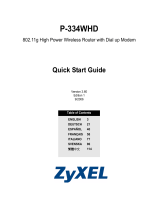 ZyXEL Communications P-334WHD Manuel utilisateur
ZyXEL Communications P-334WHD Manuel utilisateur
-
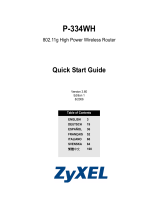 ZyXEL Communications P-334WH Manuel utilisateur
ZyXEL Communications P-334WH Manuel utilisateur
-
ZyXEL Communications G-220 Guide de démarrage rapide
-
ZyXEL Communications P-335U Manuel utilisateur
-
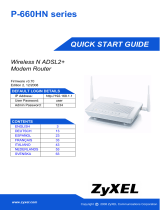 ZyXEL Communications P-660HN series Guide de démarrage rapide
ZyXEL Communications P-660HN series Guide de démarrage rapide
-
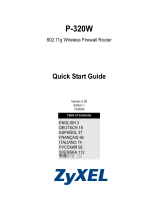 ZyXEL Communications P-320W Manuel utilisateur
ZyXEL Communications P-320W Manuel utilisateur
-
ZyXEL Communications G-220 Guide de démarrage rapide
-
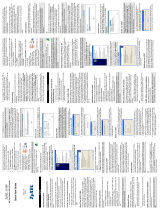 ZyXEL Communications ZYXELG-260 Manuel utilisateur
ZyXEL Communications ZYXELG-260 Manuel utilisateur
-
 ZyXEL Communications ZyXEL G-162 Manuel utilisateur
ZyXEL Communications ZyXEL G-162 Manuel utilisateur













































































































